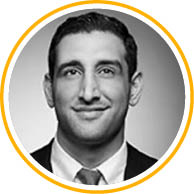
Nandini Venkateswaran, MD
I recently completed a cornea, external disease, and refractive surgery fellowship at Duke University, which provided a phenomenal fellowship program. My mentors—Terry Kim, MD; Preeya Gupta, MD; Melissa Daluvoy, MD; Victor Perez, MD; and Lloyd Williams, MD—all continue to support me, and the pearls I learned during my 12-month fellowship have been invaluable in my new position at the Massachusetts Eye and Ear Infirmary as a cataract, cornea, and refractive surgery specialist.
When going through the fellowship interview process, I interviewed at both academic and private practice–based fellowships, as I was still deciding if I would pursue a job in an academic or private practice setting. I ultimately chose Duke, as I felt the program would provide me with a diverse range of medical and surgical experiences; help me grow a robust network of mentors who are leaders in the field of ophthalmology; and provide me with the clinical, surgical, and research training required to pursue a job in an academic or private practice setting.
When determining if a particular program is the right fit, it is critical to speak to both current fellows and former fellows who have recently graduated from the program. Ask them about their experiences in the clinic and in the OR. Focus not only on the number of procedures and surgeries they performed as primary surgeons but also on the range and complexity of these cases. It is crucial in fellowship to see as much pathology as possible and to learn how to manage all complex conditions and surgical scenarios; you want to feel thoroughly prepared to manage anything in your subspecialty after graduation.
When speaking with a program’s faculty members, determine if there are individuals in the department who have the areas of expertise that interest you. Do they have ongoing research projects that you could work on to help develop your expertise in that specific area? Additionally, gauge how your personality fits in with the department. You will serve as your attendings’ righthand man or woman for an entire year (or 2 years, depending on the subspecialty), and you want to ensure that these relationships succeed. Last, spend time in the location where you are considering pursuing fellowship. Can you envision yourself meeting like-minded people and engaging in your hobbies in that region? If applicable, could you happily raise a family there as well? Could you potentially see yourself working in that area after graduation?
Prior to creating your rank list, take the time for introspection. Ensure that the programs you rank highly fulfill your top priorities. The fellowship process, similar to residency, is truly a match. Not only are you looking for a program that meets your expectations, but the fellowship program is also looking for a candidate who will love their time there, work hard, and be an asset.

M. Amir Moarefi, MD
Selecting a fellowship can be both a tough and easy decision. Simple factors such as location can simplify your choices, but other factors such as depth of experience can create a much broader list of programs to choose from. When exploring fellowship opportunities, I was looking for the program that would make me the best and most well-rounded ophthalmologist—and one who was ready for the real world the second I left the door.
Ultimately, I chose to pursue a fellowship at the Cleveland Eye Clinic with William Wiley, MD, and Shamik Bafna, MD. I recognized that this program would not only give me a vast amount of surgical experience and train my hands for any challenge, but it would also provide me with practice management experience that delved into marketing and advertising—topics we don’t get any exposure to during residency.
When looking for a fellowship program, some advice I can give is to pay attention to the amount and range of surgical procedures you will be able to perform. The more your hands get used to performing a variety of procedures, the more they will be prepared for future advances in our field. Also, consider who your mentor will be; is it someone you feel you will get along with professionally and someone you can look to as a lifelong friend for guidance in ophthalmology and in life? Evaluating these qualities should guide you to pick a fellowship experience that lasts not just a year but a lifetime.


